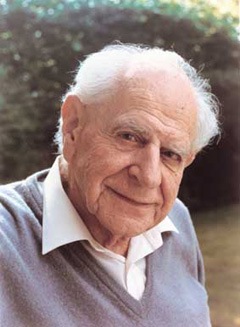This conclusion raises the possibility that, in space, there are objects that contain red, blood-like cells. In other words, comets possibly harbour life. Such an image of a comet, containing a liquid interior teeming with red cells, is difficult to imagine and even harder to accept.
 The Return Of Karl Popper: Is Social Science Really Different Than Natural Science?
The Return Of Karl Popper: Is Social Science Really Different Than Natural Science?Social Scientist have contended for much of the last century that we cannot approach the study...
 Earthquake Rocks the World Off Axis
Earthquake Rocks the World Off AxisThe recent earthquake in Chile was so big, it altered the earths rotation. So if you notice...
 PMC-BioPhysics: A New Open Access Journal
PMC-BioPhysics: A New Open Access Journal“I am very pleased to be working with PhysMath Central as I believe open access is the future...
 No Ontology without Epistemology: Of God and Mathematicians
No Ontology without Epistemology: Of God and MathematiciansOn the Big Ideas Blog there is a post about the different types of reasoning, Analytic vs. Synthetic...










